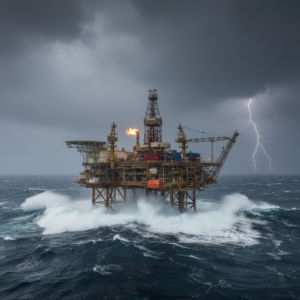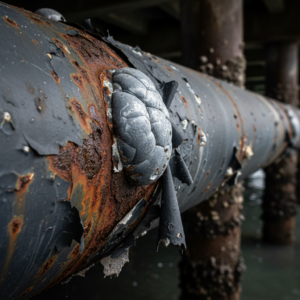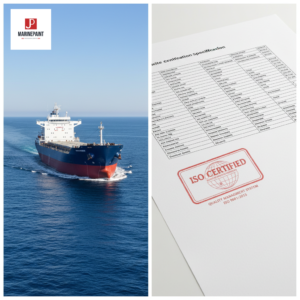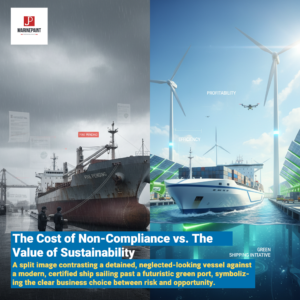What are the Main Types of Marine Paint? (Antifouling, Epoxy, Polyurethane, Alkyd)
Struggling to choose the right coating for your vessel? The wrong paint means poor protection, leading to costly damage. Understanding the main types of marine paint is key.
The main types of marine paint are primarily categorized into four groups: antifouling paints, epoxy coatings, polyurethane topcoats, and alkyd enamels. Antifouling paints are applied to the hull's underwater sections to prevent marine growth, such as barnacles and algae, which improves fuel efficiency and speed. Epoxy coatings are typically two-part systems known for their exceptional adhesion, durability, and corrosion prevention, often used as primers and barrier coats on various substrates like steel, aluminum, and fiberglass. Polyurethane paints, also usually two-part, serve as high-performance topcoats, offering excellent gloss retention, UV resistance, and abrasion resistance for areas above the waterline. Alkyd paints are traditional, single-part enamels known for their ease of application, good flow, and suitability for wood and general-purpose applications, though they are generally less durable than epoxies or polyurethanes in harsh marine environments. Each type serves a specific purpose in a complete marine coating system for optimal vessel protection.
![[Image Placeholder: Montage of different types of marine paint cans and a ship being painted] [Image Placeholder: Montage of different types of marine paint cans and a ship being painted]](https://jdmarinepaint.com/wp-content/uploads/2025/05/primer.webp)
Selecting the correct main types of marine paint for different parts of your vessel is crucial for its longevity, performance, and appearance. Let's delve into each category to understand their unique properties and applications, helping you make an informed decision for your maritime assets.
What is Antifouling Marine Paint and Why is it Essential for Boat Hulls?
Is your vessel plagued by marine growth like barnacles, algae, and slime clinging to its underwater hull? This fouling creates significant drag, drastically increases fuel consumption, and can even lead to long-term damage to the hull surface if left unchecked. The constant battle against these marine organisms is a persistent problem for boat owners, impacting performance and operational costs. Antifouling marine paint is the specialized solution, forming a critical barrier that deters these organisms from attaching, ensuring your boat's hull remains clean and efficient.
Antifouling marine paint, also known as boat bottom paint, is a specialized coating applied to the wetted surface of a ship or boat hull to slow the growth and/or facilitate detachment of subaquatic organisms that attach to the hull. These coatings achieve this by using biocides – such as cuprous oxide or other compounds – that are slowly released into the water layer closest to the hull, creating an environment hostile to marine life. Some antifouling paints are "ablative" or "self-polishing," meaning they slowly wear away over time, continuously exposing fresh layers of biocide. Others are "hard" antifouling paints, which create a durable, non-eroding surface that leaches biocides. Effective marine growth prevention is vital for maintaining vessel speed, fuel efficiency, and protecting the hull from the corrosive effects of attached organisms. Regular boat hull maintenance, including the timely reapplication of antifouling paint, is essential. At JDmarine, we offer solutions like our long-lasting JD753 Tin-free self-polishing antifouling paint and the effective JD713 Chlorinated Rubber Antifouling Paint. For specific needs, products such as JDL44-83 Bituminous Antifouling Paint are also available.
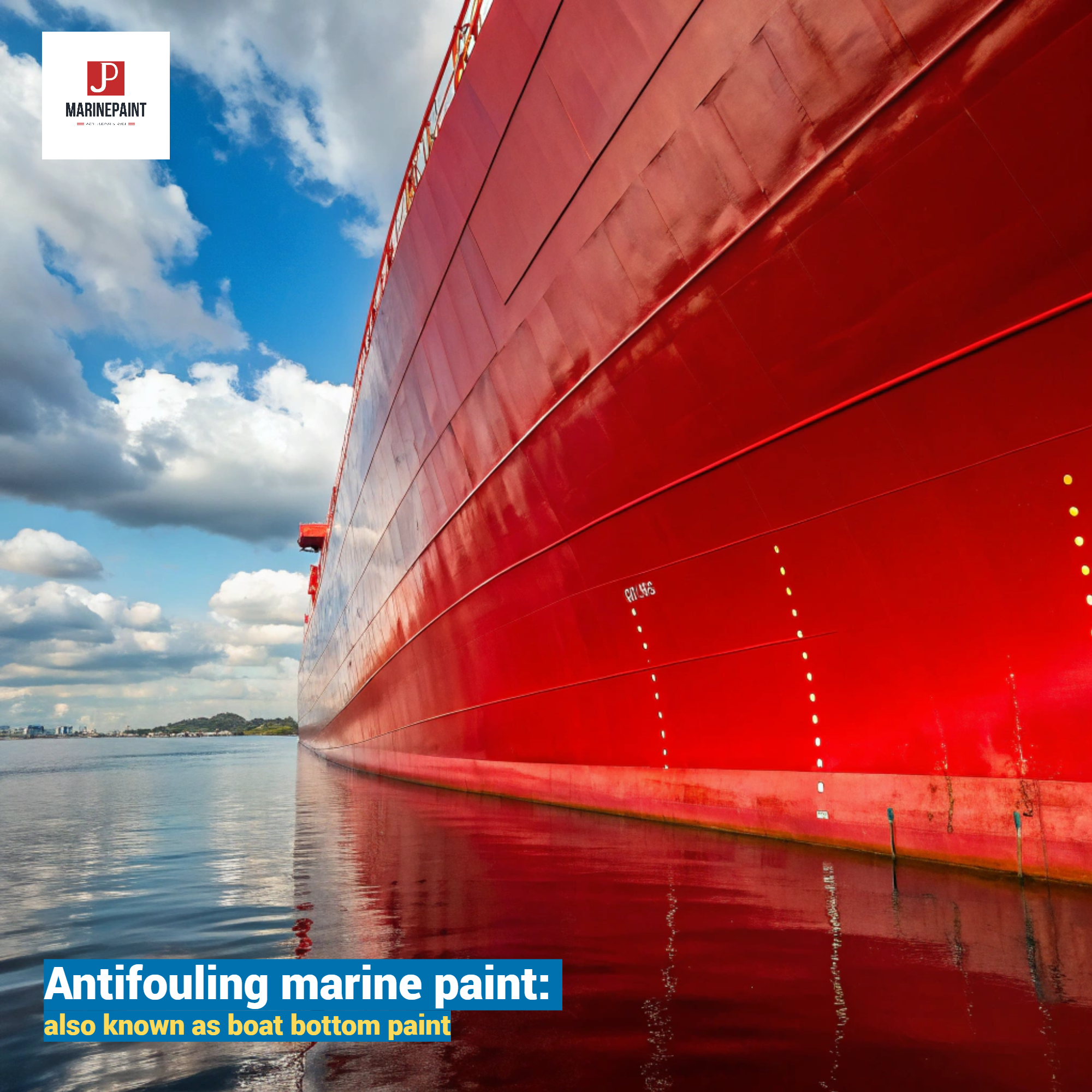
How Do the Main Types of Antifouling Marine Paint Work?
Antifouling paints primarily work through the controlled release of biocides. The mechanism can vary:
- Ablative (Self-Polishing) Antifouling: These paints wear away or "polish" with the movement of water, constantly exposing a fresh layer of biocide. This action also helps to shed any initial fouling that might have attached. Our JD753 Tin-free self-polishing antifouling paint is an excellent example of this technology, providing consistent protection.
- Hard Antifouling (Contact Leaching): These create a hard, durable surface that slowly leaches biocides. They are often scrubbable and preferred for faster boats or boats that are frequently hauled and cleaned.
- Foul Release Coatings: A newer, biocide-free technology, these create a very slick, non-stick surface that marine organisms find difficult to attach to. Any that do attach are often washed off when the vessel is underway.
Key Benefits and Considerations for Antifouling Paint
| Benefit | Description |
|---|---|
| Improved Fuel Efficiency | A clean hull reduces drag, meaning the engine works less to achieve the same speed, saving fuel. |
| Maintained Speed & Performance | Prevents the loss of speed and maneuverability caused by fouling. |
| Hull Protection | Reduces the risk of hull damage and corrosion that can be exacerbated by marine growth. |
| Reduced Maintenance Frequency | Extends the intervals between hull cleaning. |
| Prevention of Invasive Species Spread | By preventing organisms from attaching, it helps reduce the transport of non-native species to new environments. |
Considerations:
- Water Type: Saltwater and freshwater environments may require different antifouling formulations.
- Vessel Usage: How often the boat is used and the speed at which it travels can influence the best type of antifouling.
- Environmental Regulations: Biocide use is regulated, and eco-friendly marine paint options are becoming more prevalent.
- Compatibility: Ensure the new antifouling is compatible with existing paint layers or that a suitable primer/tie coat is used. Our JD744 Chlorinated Rubber Antifouling Paint offers reliable performance for many vessels.
What Makes Epoxy Marine Paint a Top Choice for Vessel Protection?
Is your vessel's hull constantly exposed to the relentless attack of saltwater, moisture, and potential impacts? These harsh marine conditions are a notorious breeding ground for corrosion on metal surfaces and osmosis in fiberglass, potentially compromising your vessel's structural integrity and leading to extensive, expensive repairs down the line. The thought of hidden damage developing below the waterline is a significant concern for any boat owner, affecting not just safety and lifespan but also resale value. Epoxy marine paint stands as a formidable barrier, providing unparalleled corrosion prevention and a robust, impermeable foundation crucial for the entire paint system.
Epoxy marine paints are typically two-part coatings consisting of an epoxy resin and a hardener (catalyst). When mixed, they undergo a chemical reaction to form a very hard, durable, and highly adhesive film. This makes them one of the main types of marine paint for providing exceptional protection against water ingress, chemicals, and abrasion. Epoxies are widely used as marine primers on various substrates, including steel boat paint, aluminum boat paint, and fiberglass boat paint applications, creating a strong foundation for subsequent topcoats. Their excellent water resistance also makes them ideal as barrier coats to prevent osmosis in fiberglass hulls and for bilge coating. For robust priming, consider JDmarine's JDH06-4 Epoxy Zinc-Rich Anti-Rust Primer or for general anti-rust needs, JDH815 Iron Oxide Red Epoxy Primer. For specialized applications, our JDH912 Epoxy Potable Water Tank Coating ensures safety and durability.
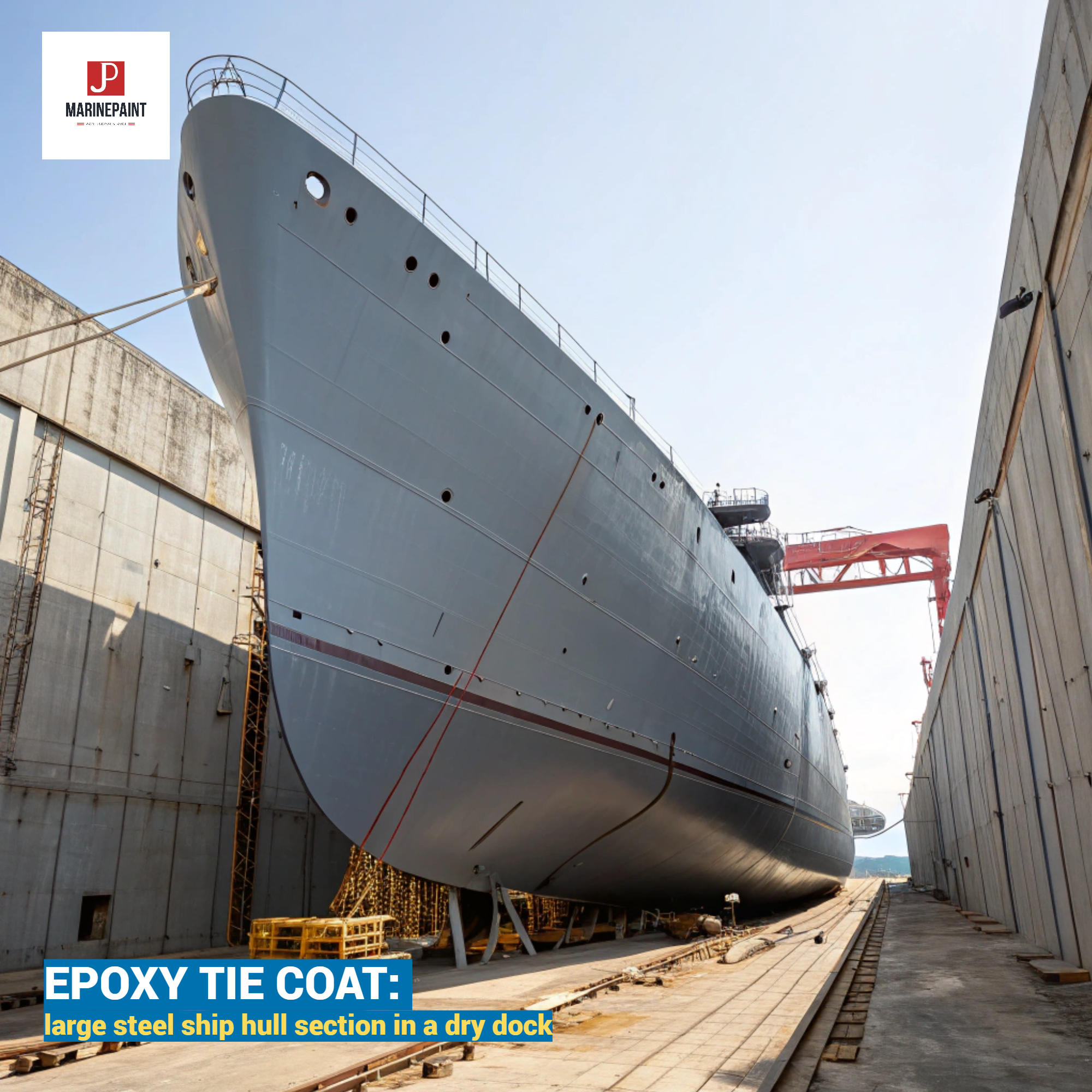
Core Characteristics and Applications of Epoxy Marine Coatings
Epoxy coatings are renowned for several key characteristics that make them indispensable in marine applications:
- Exceptional Adhesion: Epoxies bond extremely well to properly prepared surfaces, including steel, aluminum, fiberglass, and even wood (though some formulations are better suited for wood than others).
- Superior Water Resistance: They create a highly impermeable barrier, crucial for preventing water absorption, osmosis in fiberglass, and corrosion on metals.
- Excellent Corrosion Prevention (Marine): When applied directly to metal, particularly zinc-rich epoxies like JDH06-4 Epoxy Zinc-Rich Anti-Rust Primer, they offer outstanding protection against rust. Other anti-rust options include JDH835 Aluminum Iron Epoxy Anti-Rust Paint and the solvent-free JDH836 Solvent-Free Aluminum Iron Epoxy Anti-Rust Paint.
- High Durability and Abrasion Resistance: The cured film is tough and can withstand significant wear and tear.
- Chemical Resistance: Epoxies resist many chemicals, oils, and solvents.
Typical Applications for Epoxy Paints on Vessels:
| Application Area | Purpose | Example JDmarine Product |
|---|---|---|
| Below Waterline | Primer, barrier coat against osmosis, foundation for antifouling. | JDH818 Rough Surface Epoxy Primer |
| Above Waterline | Primer for topsides and decks, providing corrosion protection. | JDH816 Grey Epoxy Primer |
| Bilges | Protection against water, oil, and fuel. | JDH819 Epoxy Zinc Phosphate Primer |
| Tanks | Lining for water (potable/non-potable), fuel, and some chemical tanks. | JDH912 Epoxy Potable Water Tank Coating |
| Tie Coat | Promoting adhesion between different coating types. | JDH263 Epoxy Tie Coat, JDH817 MIO Epoxy Anti-Rust Tie Coat, or JDH825 Solvent-Free Epoxy Tie Coat |
Epoxies are foundational for a durable coating system, though they are susceptible to chalking from UV exposure if not top-coated when used above the waterline.
Why is Polyurethane Marine Paint Favored for a Lasting, High-Gloss Finish?
Does your boat’s topside, deck, or superstructure look dull, faded, or chalky after just a few seasons? The harsh marine environment, with its relentless UV radiation, saltwater spray, and constant potential for abrasion, can quickly degrade an inferior finish, diminishing your vessel’s aesthetic appeal, pride of ownership, and ultimately its value. Repainting frequently is a costly and time-consuming frustration no boat owner wants. Polyurethane marine paint is the answer, delivering a supremely durable, high-gloss topcoat that offers exceptional UV resistance, color retention, and robust protection against the elements, ensuring your boat looks "ship-shape" for much longer.
Polyurethane marine paint, typically a two-part (2K) system, is renowned for its ability to produce a hard, flexible, and extremely durable finish with excellent gloss and color retention. It stands as one of the main types of marine paint used for topcoats above the waterline, on areas like the hull (topside paint), deck, and superstructure. Its outstanding UV resistant marine paint qualities prevent the finish from breaking down under sunlight, resisting chalking and fading far better than other paint types. Polyurethanes also offer superior abrasion and chemical resistance, protecting the underlying primer and substrate from wear, tear, and spills. For a brilliant, long-lasting finish, JDmarine offers products like JD908 Acrylic Polyurethane Topcoat Non-Yellowing Resistant and the premium JD918 Acrylic Polyurethane Hull Paint (Yellowing resistance), designed for maximum aesthetics and protection. These marine topcoats ensure your vessel maintains its value and appearance.
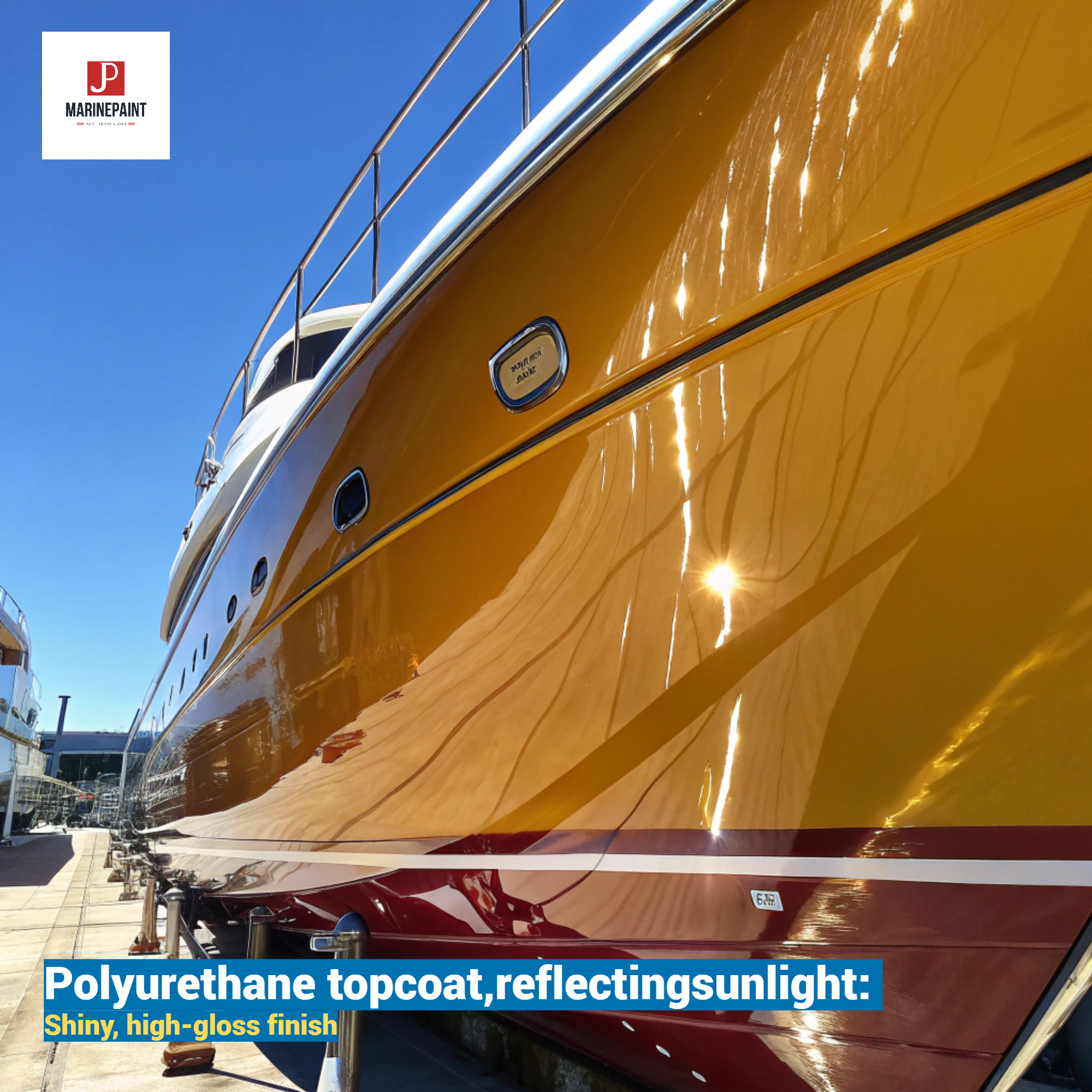
Defining Features and Benefits of Polyurethane Marine Topcoats
Polyurethane paints are prized for several characteristics that make them ideal as marine topcoats:
- Exceptional Gloss and Color Retention: They provide a deep, brilliant gloss that lasts, keeping the boat looking new.
- Superior UV Resistance: Polyurethanes, especially aliphatic types, are highly resistant to degradation from sunlight, preventing chalking paint (marine) and fading.
- Excellent Durability and Abrasion Resistance: The cured film is very tough and can withstand scuffs, scratches, and general wear.
- Chemical and Stain Resistance: They resist spills of fuel, oil, and common boat-cleaning chemicals.
- Flexibility: Many polyurethane formulations offer good flexibility, accommodating minor movements in the substrate without cracking.
Benefits of Opting for Polyurethane Paint:
| Benefit | Explanation |
|---|---|
| Aesthetics | Provides a "better than new" finish with high gloss and vibrant colors. |
| Longevity | Significantly extends the life of the paint job compared to traditional enamels, reducing repaint frequency. |
| Protection | Protects underlying primers and substrates from environmental damage, including UV, water, and chemicals. |
| Cleanability | The smooth, hard surface is easier to clean and resists staining. |
| Value Retention | A well-maintained, glossy finish enhances the vessel's resale value. JDmarine's yacht paint quality finishes contribute to this. |
While DIY boat painting with polyurethanes is possible, professional boat painting is often recommended for best results due to the specific boat painting techniques and surface preparation for marine paint required for these two-part marine paints. They require precise mixing and often specific application conditions (temperature, humidity). Our JDFT810 Fluorocarbon Topcoat represents another high-performance topcoat option offering exceptional durability.
When is Alkyd Marine Paint the Right Choice for Your Boating Needs?
Are you looking for a traditional, user-friendly boat paint that offers reliable protection without the complexities and demanding application requirements of two-part systems like epoxies or polyurethanes? Many modern coatings, while high-performance, can be intimidating for DIY enthusiasts or may not be the best choice for certain substrates, particularly classic wooden boats. You might hesitate to tackle a boat painting project if it involves precise mixing ratios, short pot lives, and specialized equipment, potentially leading to project delays or increased costs for professional help. Alkyd marine paint, often referred to as marine enamel, provides a dependable, easy-to-apply single-part marine paint solution that is forgiving for DIY boaters and well-suited for a variety of applications, especially on wooden boat paint projects and for general-purpose protection above the waterline.
Alkyd marine paints, or marine enamels, are traditional, oil-based, single-part (1K) coatings known for their ease of application, good flow and leveling properties, and generally good gloss. They are one of the main types of marine paint favored for DIY boat painting and for applications where extreme durability is secondary to ease of use and cost-effectiveness. Alkyds adhere well to properly prepared wood, making them a classic choice for wooden boat paint, and can also be used on fiberglass and metal that has been appropriately primed. While not as hard-wearing or UV resistant as polyurethanes, or as impermeable as epoxies, alkyds offer good protection for topsides, decks, and interiors. JDmarine provides a selection of alkyd paints, such as the JDC53-31 Red Lead Alkyd Anti-Rust Paint for robust rust prevention, the versatile JDC43-31 Alkyd Hull Paint and JDC42-32 Alkyd Deck Paint. For heat resistance, our JDC200 Aluminum Alkyd Heat-Resistant Paint is a suitable option.
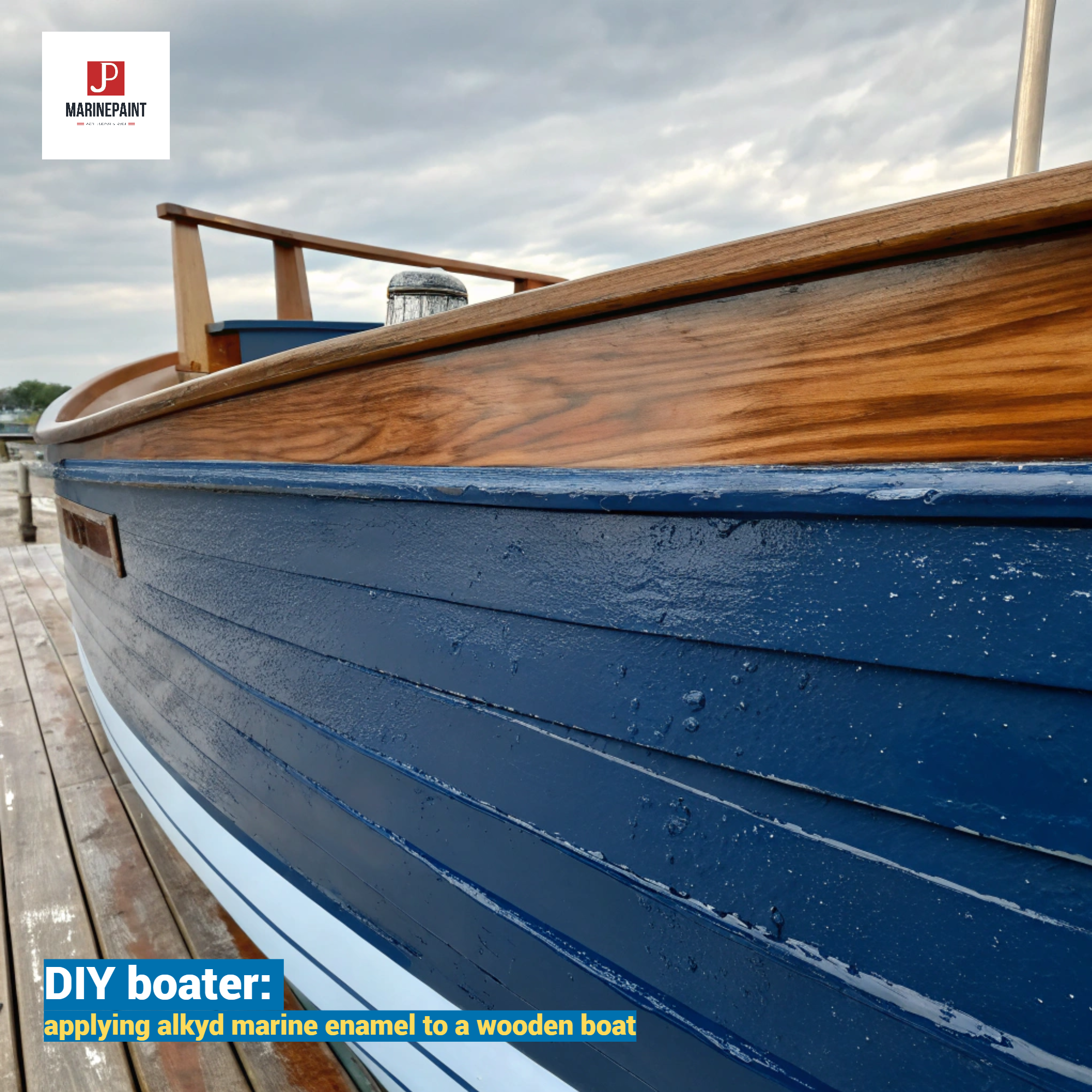
Understanding Alkyd Marine Enamels and Their Applications
Alkyd paints cure through oxidation, reacting with oxygen in the air. This process is generally slower than the chemical curing of two-part paints.
- Ease of Use: Being single-part, they require no mixing of components beyond stirring, making them very user-friendly.
- Good Flow and Leveling: Alkyds tend to flow out well, minimizing brush marks for a smooth finish when using brush or roller.
- Flexibility: They generally offer good flexibility, which is beneficial on wooden boats that can expand and contract with moisture changes.
- Cost-Effectiveness: Alkyds are often more affordable than two-part epoxies or polyurethanes.
- Substrate Suitability: Excellent for wooden boat paint; also suitable for primed fiberglass and metal for less demanding applications.
Common Uses and Advantages of Alkyd Coatings:
| Advantage | Detail |
|---|---|
| DIY Friendly | Simple application by brush, roller, or spray gun without critical mixing ratios or short pot life. |
| Good for Wood | Traditional choice for wooden hulls, superstructures, and trim due to flexibility and breathability (for some formulations). |
| Aesthetic Appeal | Can achieve a good gloss finish, though not as high or durable as polyurethanes. |
| Reparability | Easier to touch up than two-part systems. Damaged areas can often be sanded and repainted with good blending. |
| Anti-Rust Priming | Alkyd anti-rust primers like JDC53-35 Aluminum Iron Alkyd Anti-Rust Paint or JDC53-38 Low Odor Iron Oxide Red Alkyd Anti-Rust Paint provide good basic corrosion prevention. Other options include JDC53-36 Iron Red Alkyd Anti-Rust Paint and JDC53-37 Zinc Grey Alkyd Anti-Rust Paint. |
| Specific Area Coatings | Products like JDC42-31 Alkyd Boottopping Paint are formulated for the waterline area. |
While alkyds are user-friendly, they have longer drying/curing times and offer less resistance to abrasion, chemicals, and UV degradation compared to modern two-part systems. They are best suited for areas not subject to extreme wear or constant immersion. Other specialized coatings like our JDB902 Acrylic Hull Paint or JDB903 Modified Acrylic Topcoat offer alternative single-part solutions with different performance characteristics.
Conclusion
Choosing among the main types of marine paint—antifouling, epoxy, polyurethane, and alkyd—depends on your specific needs, vessel type, and desired level of protection and aesthetics.
![]()

